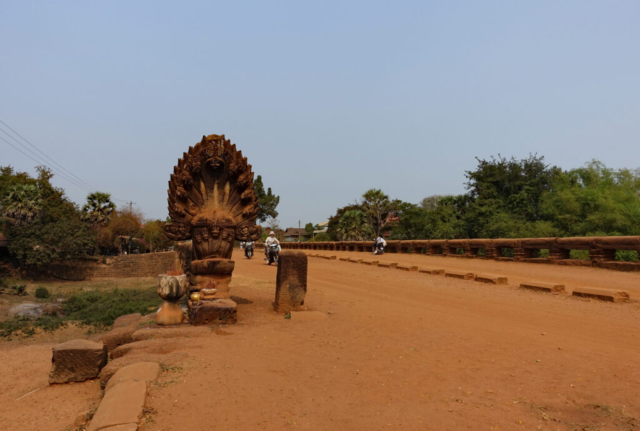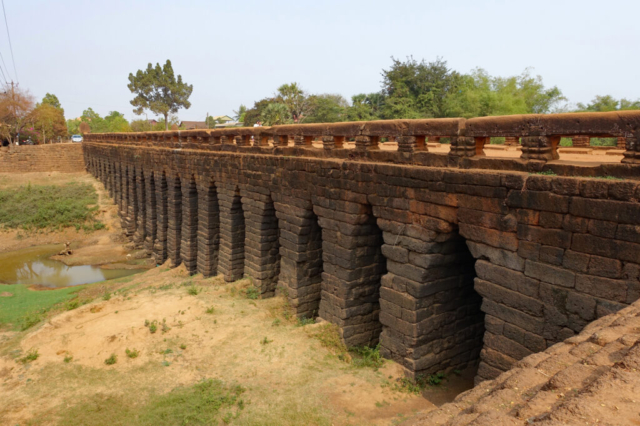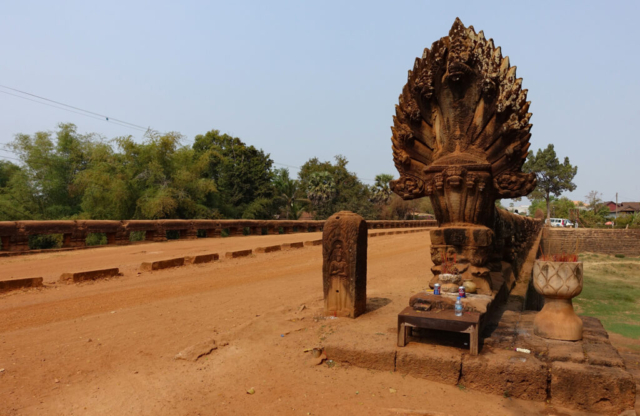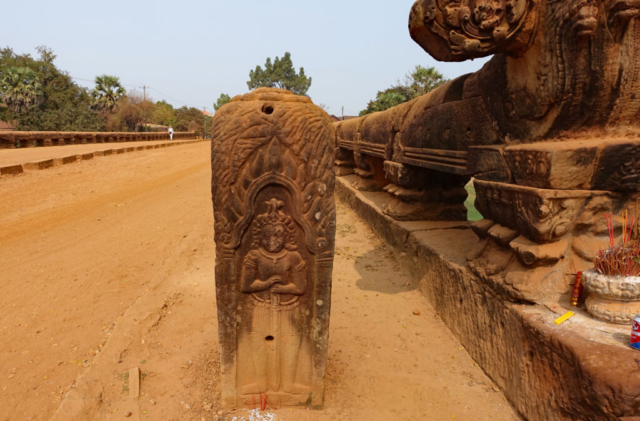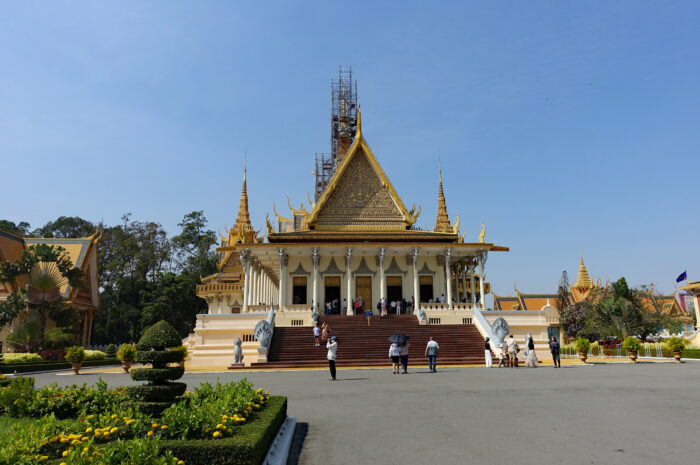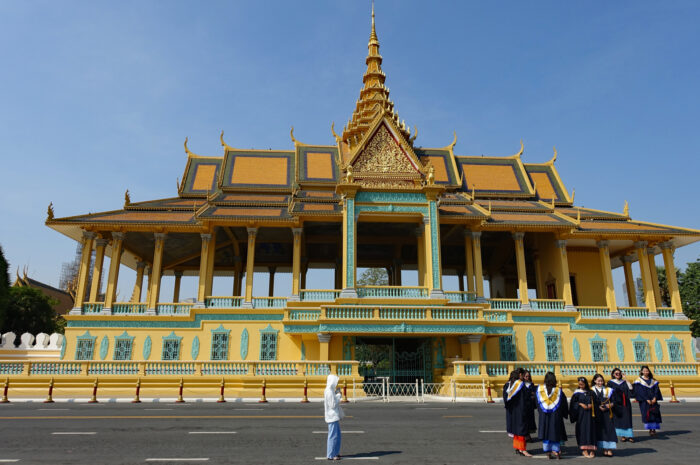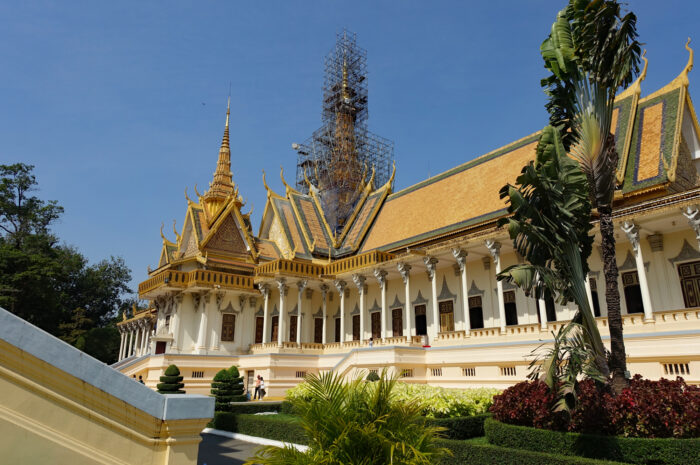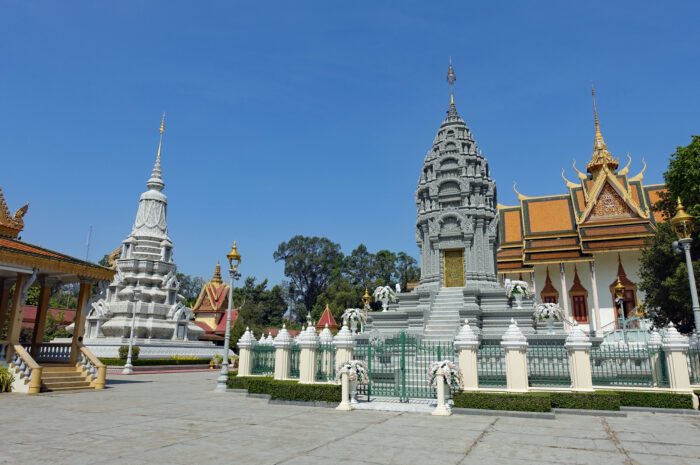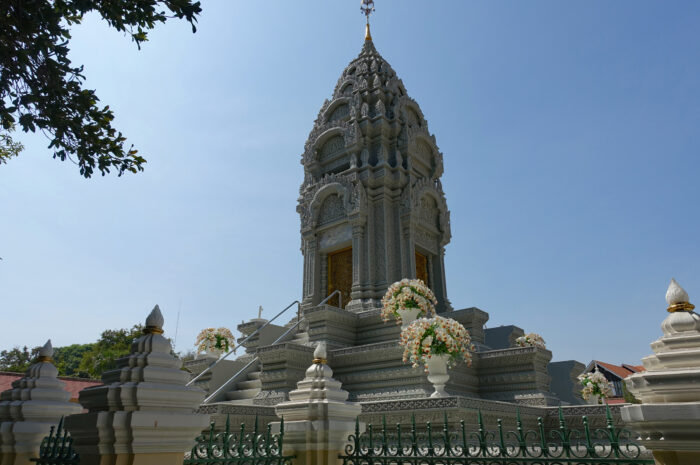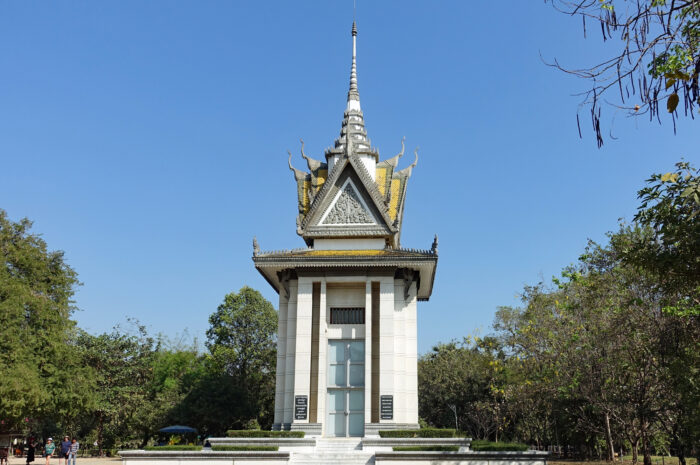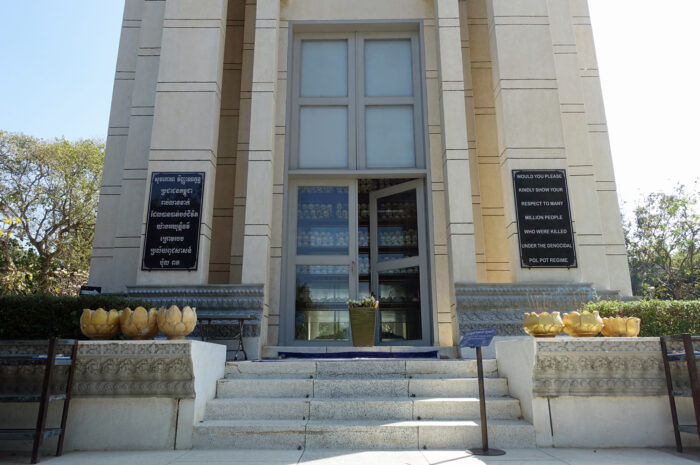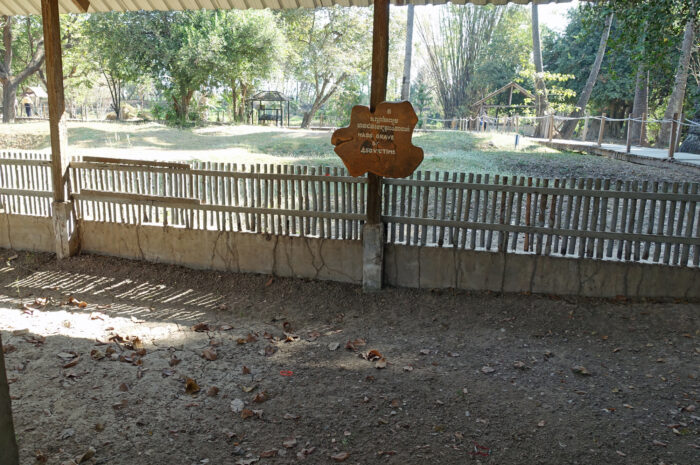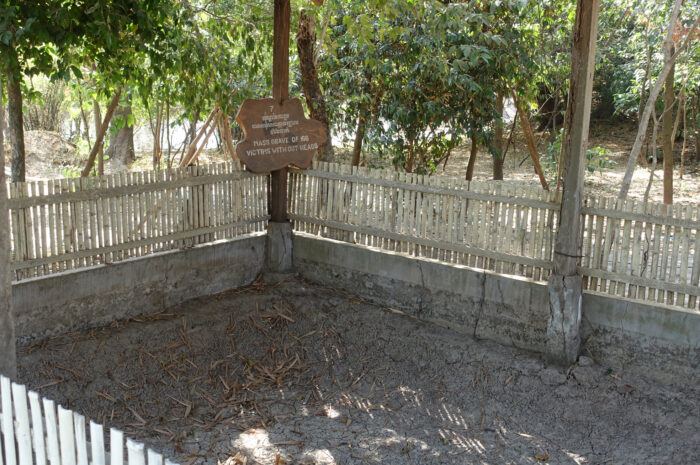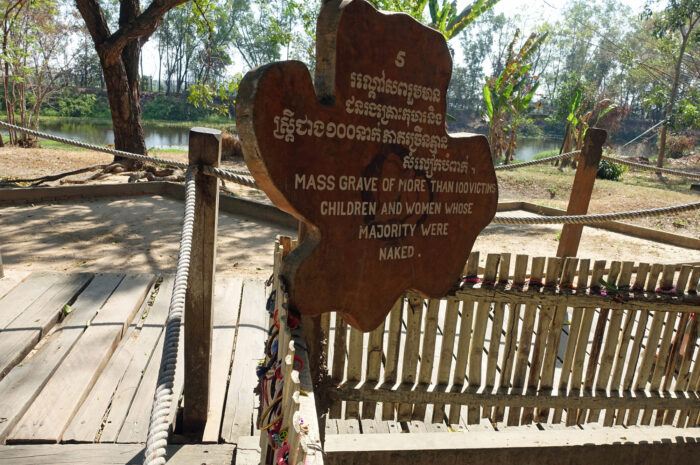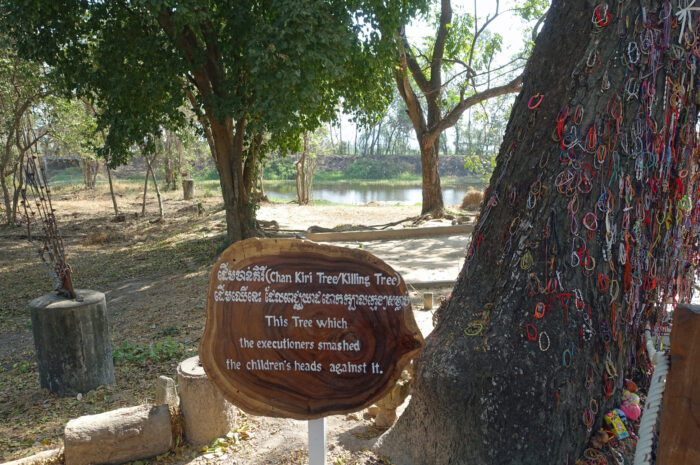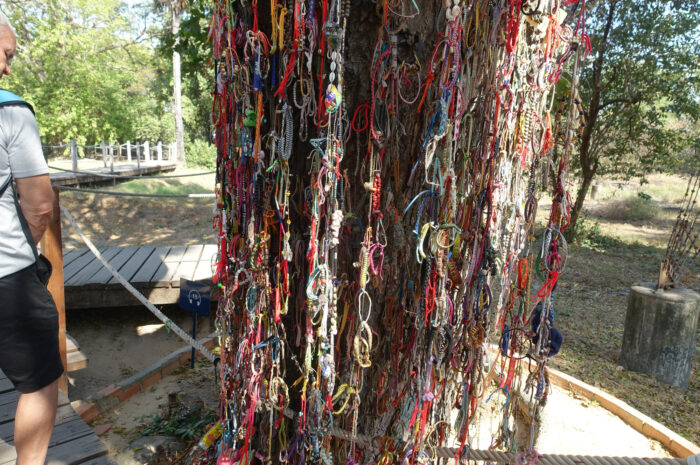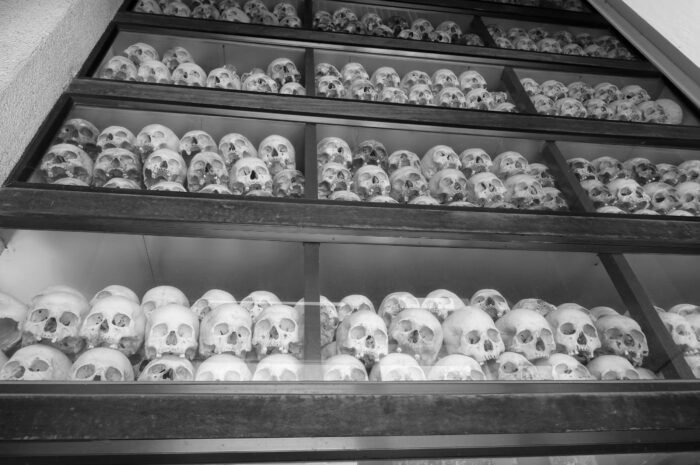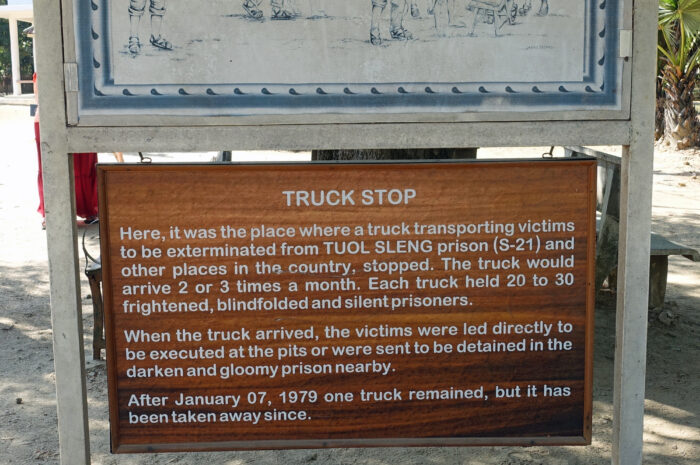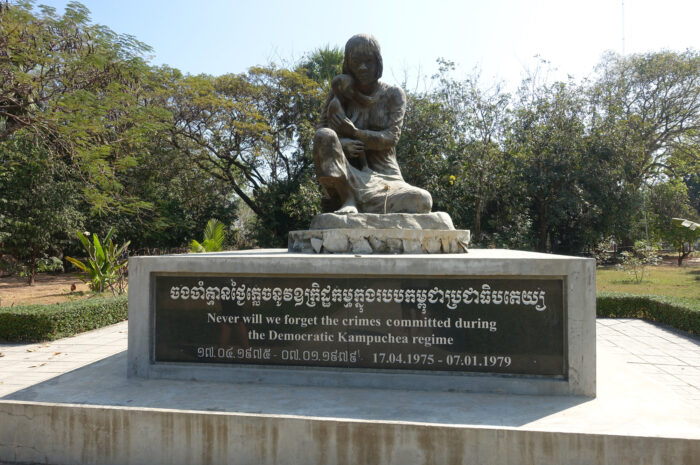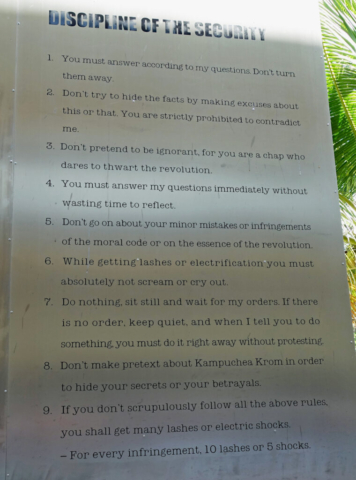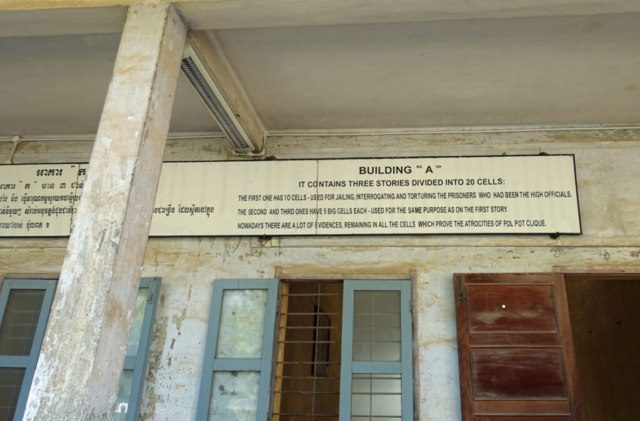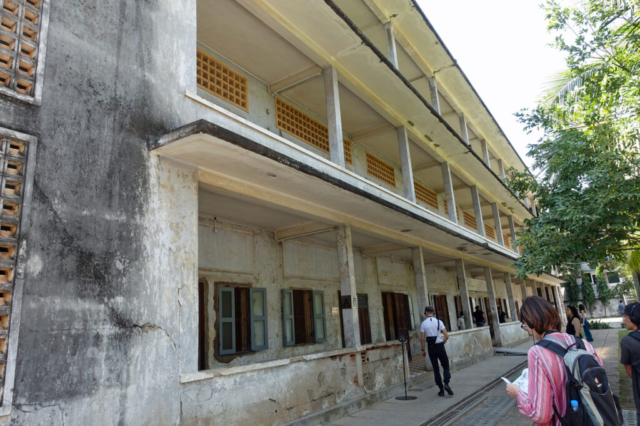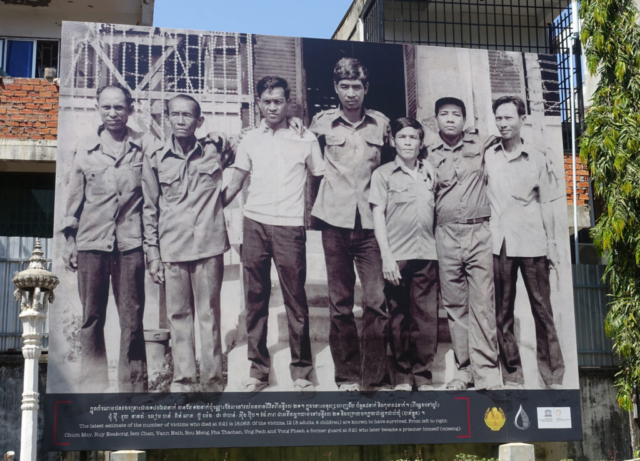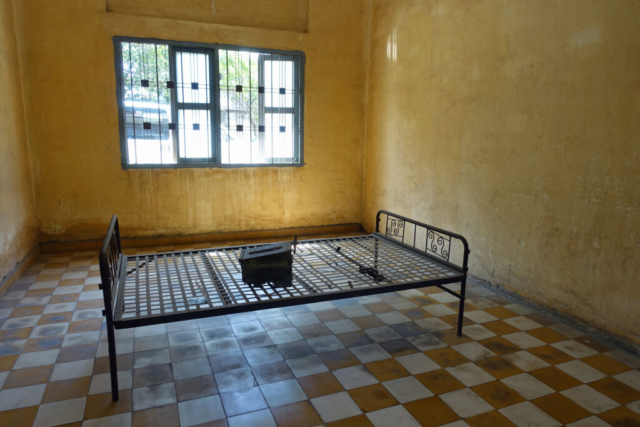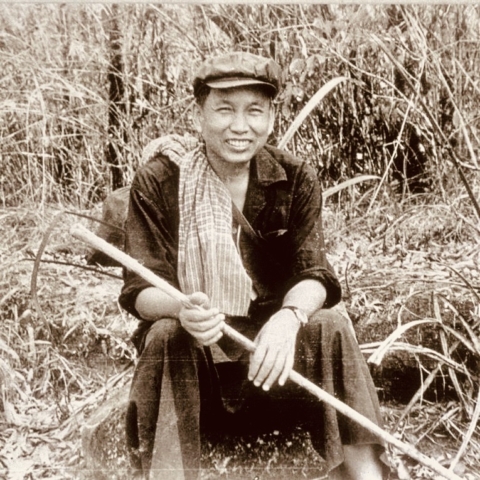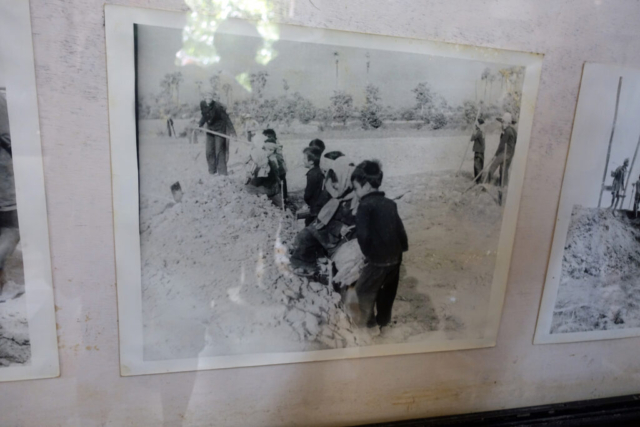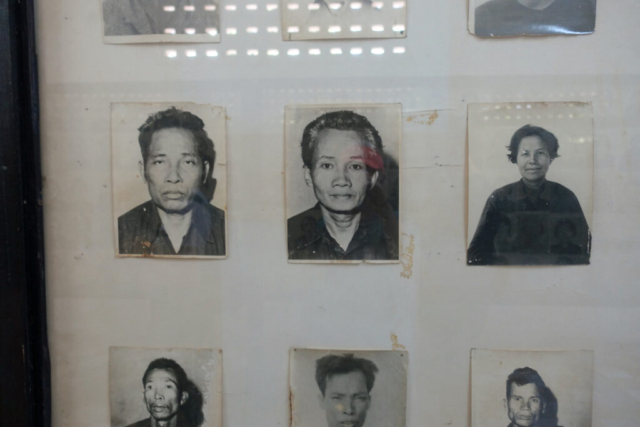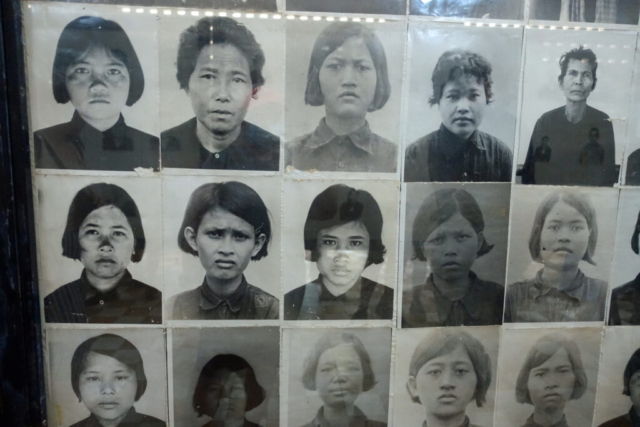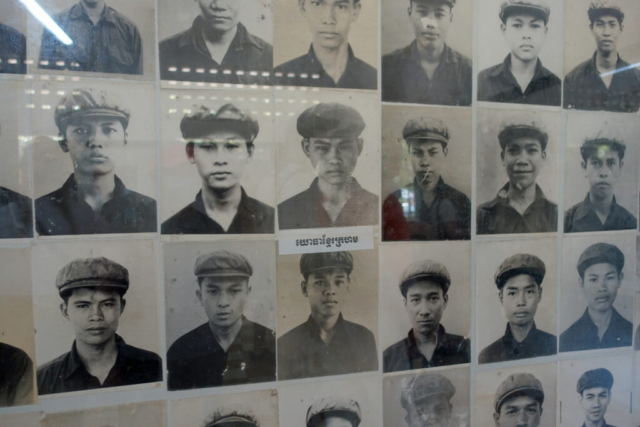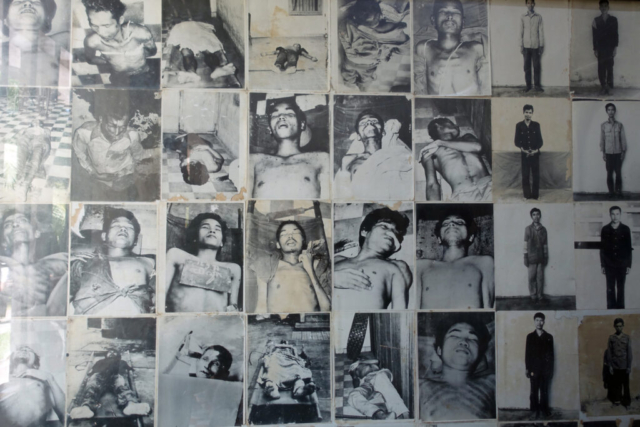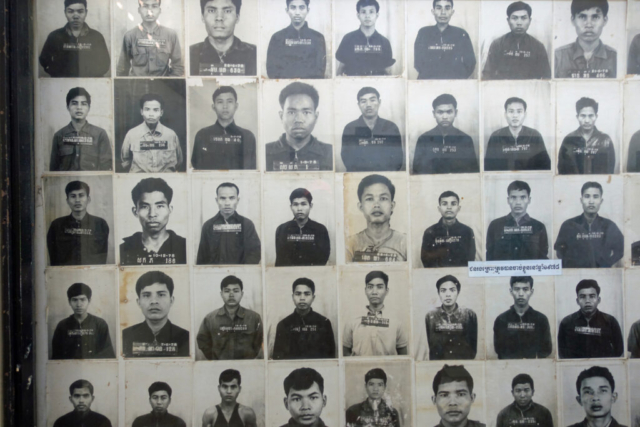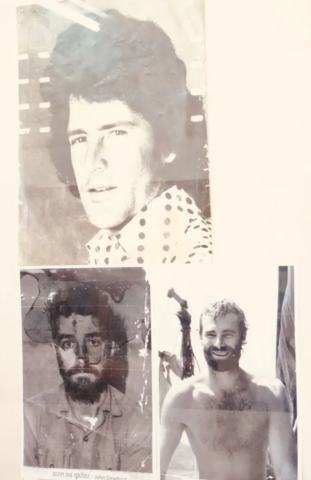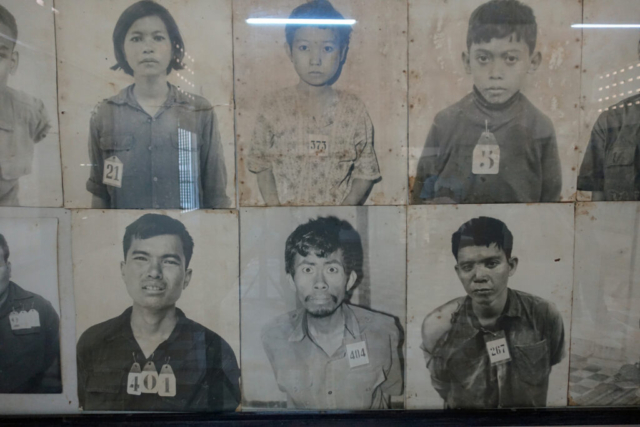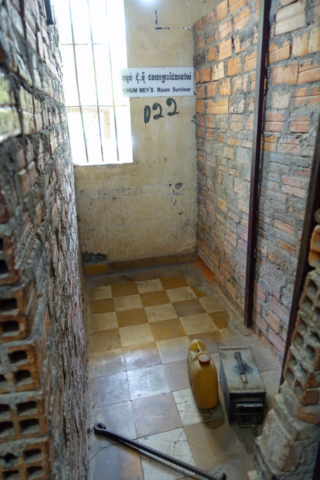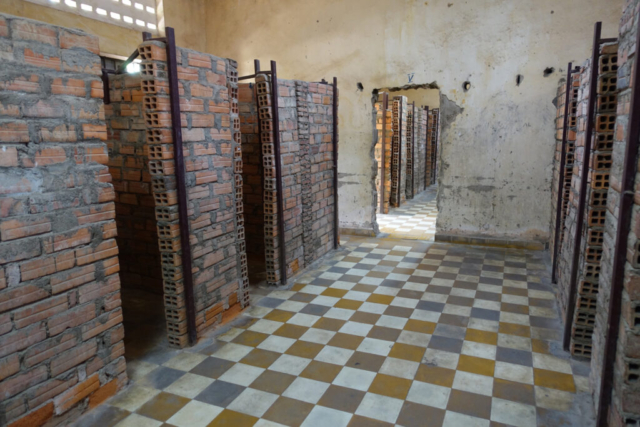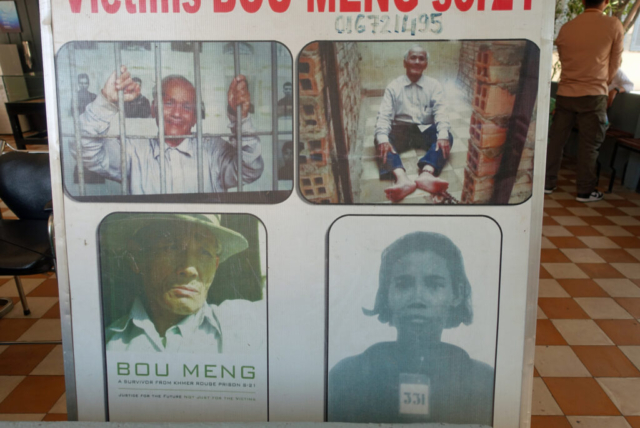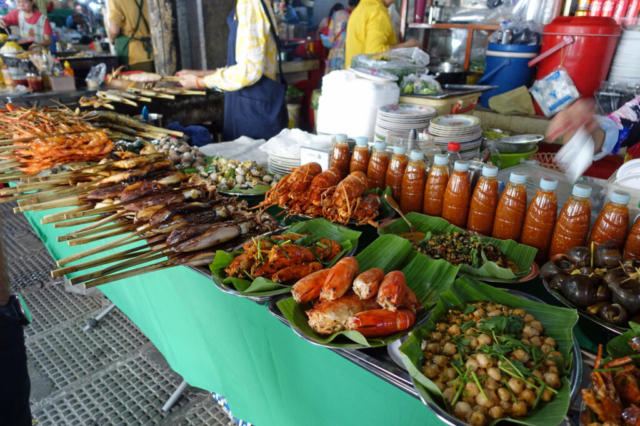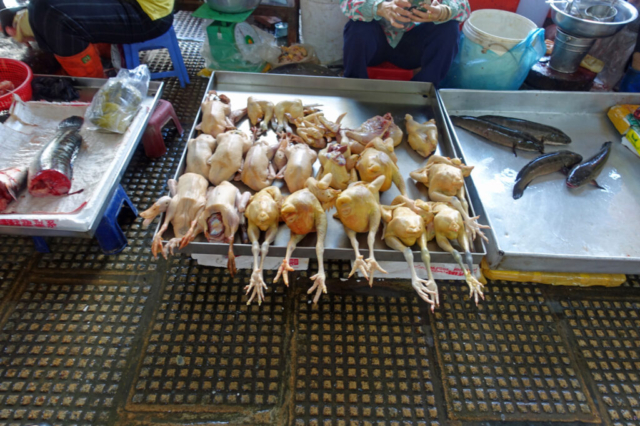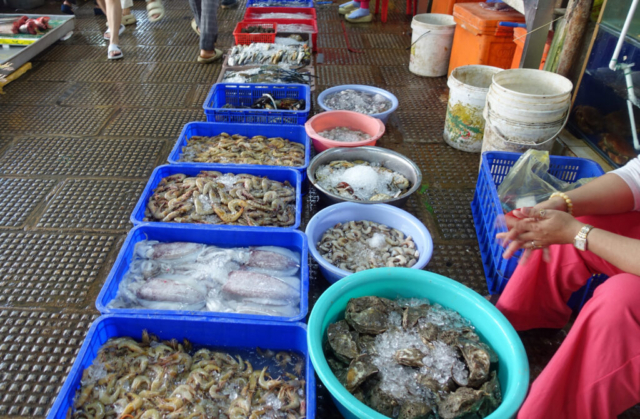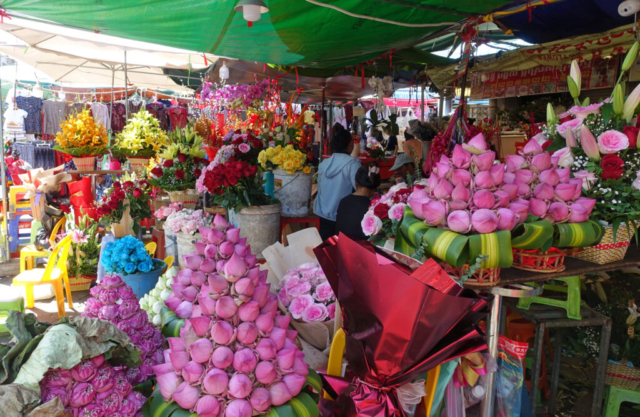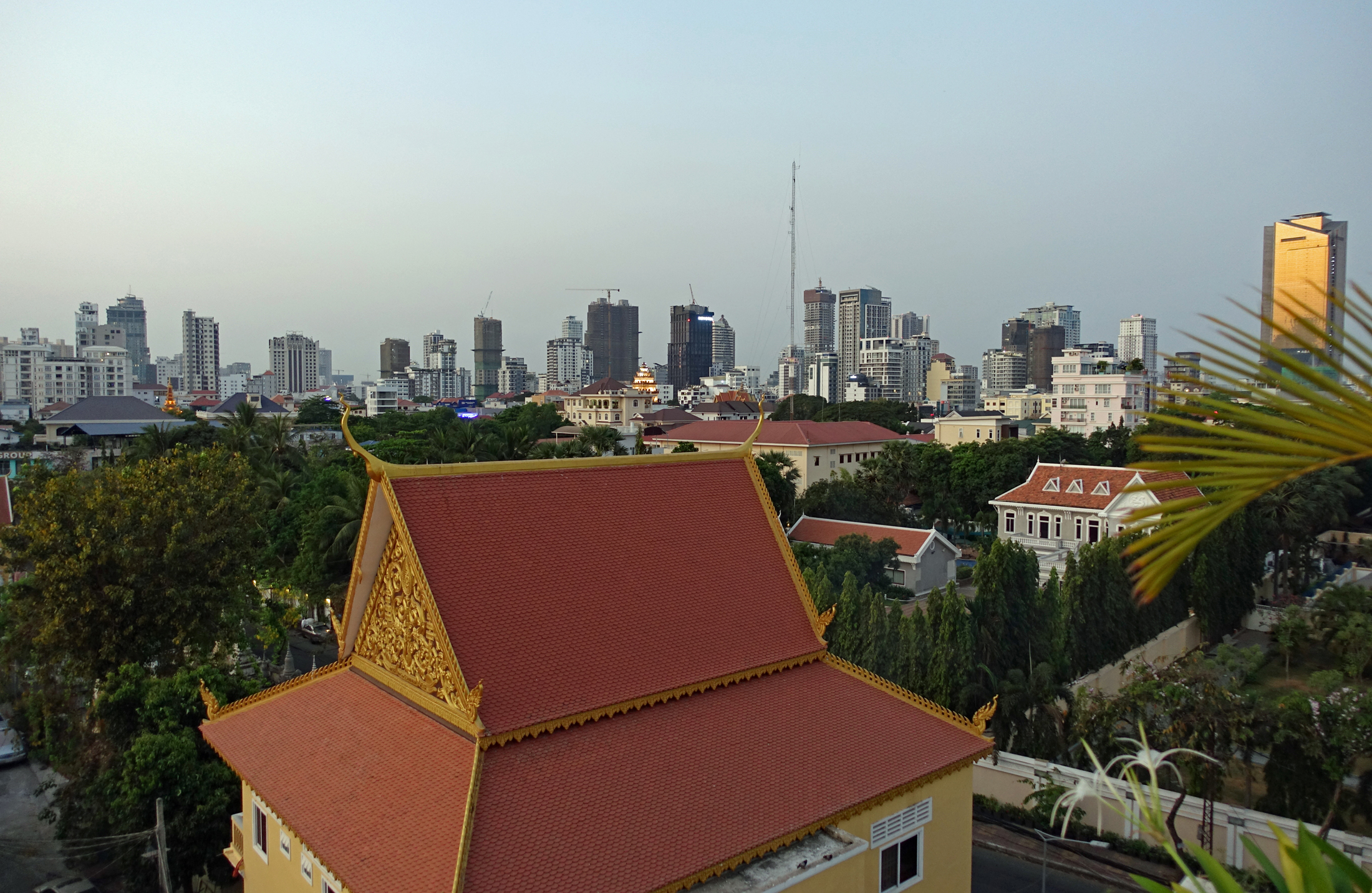
Phnom Penh has been the capital of Cambodia since 1865 and is the largest city in the country with around 2.5 million residents. We don’t care for large cities, so why are we here? We are taking a cruise down the Mekong River from Phnom Penh into Vietnam and since we had to come here, we decided to spend a few days, look around and form our own opinions of the city. What can I say, it’s a big, dirty and crowded city!
We hired a private driver for the 5 ½ hour drive from Siem Reap to Phnom Penh. It was a great option because our driver showed us a couple of interesting places along the way and was happy to answer all our questions. We made one stop to see the Kampong Kdei Bridge, estimated to have been built in the 12th century. The bridge is 86m long with 21 arches topped by sandstone balustrade and ornamental Naga.
Our second stop was a very brief one, at the spider market. Ugh, cooked tarantulas, cockroaches, crickets, maggots, etc 🤢
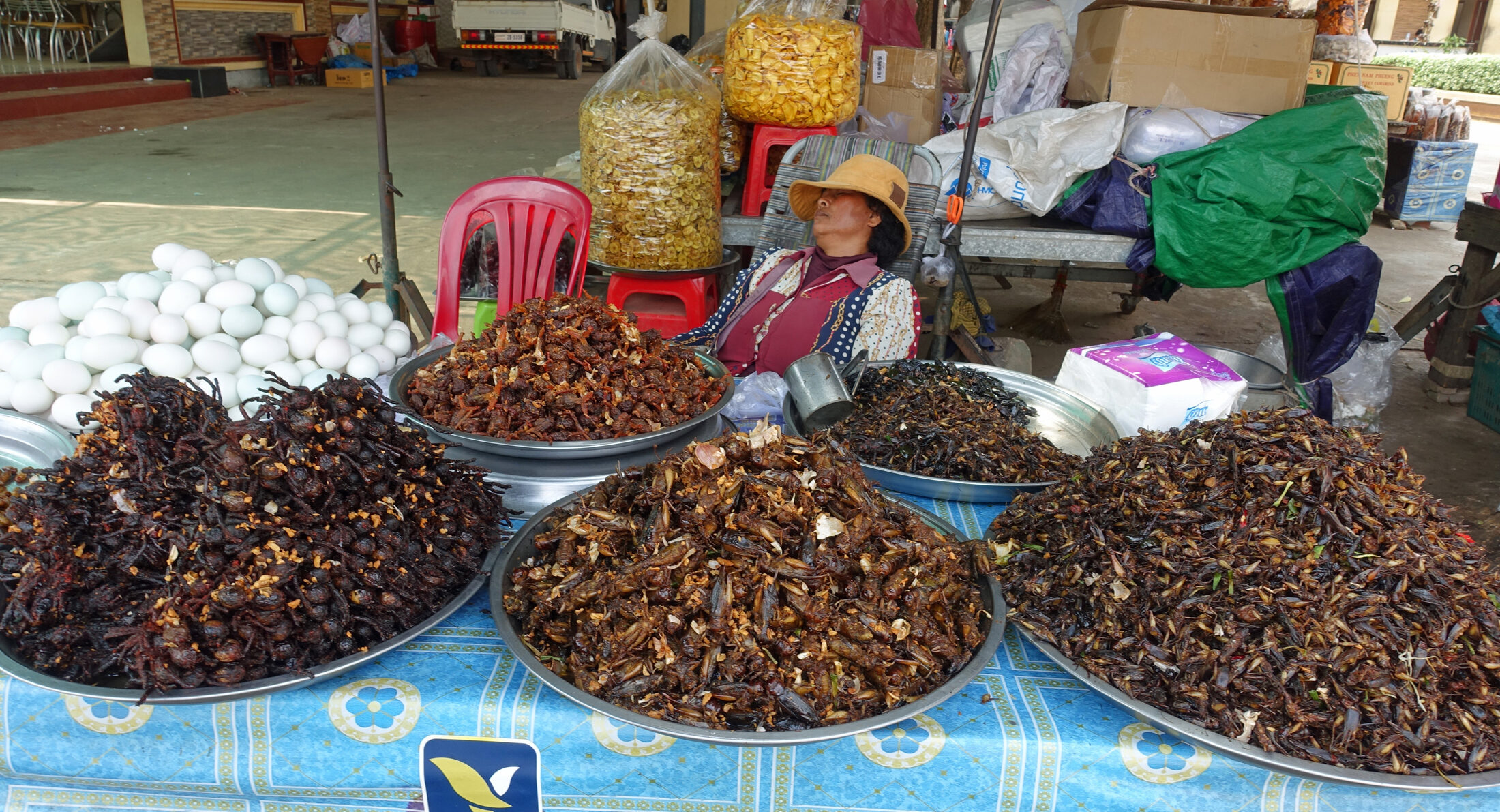
Driving allowed us to view how life is in the countryside for most Cambodians, 60-70% of whom work in agriculture. We saw a variety of food stalls along the roadside, houses of every description, miles of rice fields, cashew orchards, vegetable and cassava crops and lotus flower farms. We learned that houses are built on concrete stilts to provide airflow and protection from insects and that the higher the stilts the more power that person has. Engine oil is spread around the base of the stilts to discourage insects, mainly termites, from climbing up into the wooden house above. All in all, it was an educational journey between cities and one we would do again. We used Voleak Tuk Tuk and we paid USD $85 for the trip in a very comfortable SUV.
Shortly after we arrived in Phnom Penh we had arranged to meet fellow nomads Howard and Whitney for dinner, they are from our hometown of Calgary where we met for the first time in 2022. As we arrived, they were leaving the next day for Siem Reap so we found a few hours to catch up and share travel info. As usual, too much fun talking and I forgot to take photos!
The Royal Palace is one of the most iconic landmarks in Phnom Penh, and very close to our hotel. Located in the heart of the city, near the Mekong River, the palace was built between 1866 and 1870 and is a fine example of Khmer architecture. It is the official residence of the King of Cambodia and when the flag is flying, he is in residence. We decided to hire a tour guide for an hour to learn about the country’s royal history, the palace grounds and the temples on the property. Our guide said that we picked a good day to visit because tomorrow the palace is closed for a wedding celebration for a member of the royal family. Tickets to the palace cost USD $10 each and the tour guide cost another USD $10, well worth it in our opinion.
Two of the most recommended places to visit in Phnom Penh are the Choeung Ek Killing Fields and the Tuol Sleng S21 Prison, we decided to join an organized tour to get a better insight into Cambodia’s tragic history. The Killing Fields memorial park at the village of Choeung Ek has been built around 129 mass graves of an estimated 20,000 victims, most of whom were executed after interrogation at the S-21 prison in Phnom Penh. Many of the graves are visible above ground, bones and clothing still surfacing after heavy rains due to the large number of bodies still buried. The saddest part of the tour was the killing tree where infants were killed by having their heads bashed against the trunk and then thrown into the pits alongside their parents. The rationale for this atrocity? To stop them growing up and taking revenge for their parents deaths! The centerpiece of the fields is a large commemorative stupa filled with skulls of the victims. While this killing field is the largest and most well known, there are estimated to be more than 20,000 mass grave sites around Cambodia containing more than 1,380,000 bodies. Our visit to Choeung Ek was sobering, with a very quiet tour group.
After Choeung Ek we toured the infamous Tuol Sleng, S-21 prison, one of more than 150 torture and execution centers established by the ultra-communist Khmer Rouge. In 1975 the Tuol Svay School was taken over by Pol Pot’s security forces and soon became the largest center of detention and torture in the country. An estimated 20,000 prisoners were brought here, tortured and killed, from 1976 to 1979, only 7 survived. Two of the survivors, Chum Mey and Bou Meng, are still alive and spend many days at the museum selling their autobiographies, posing for photographs and answering questions. Most of the buildings at Tuol Sleng have been left as they were found in 1979 when the Khmer Rouge were driven out. Each prisoner who passed through here was photographed, sometimes before and after torture. There are numerous walls with black and white photographs of people who passed through here, and in some cells disturbing photographs of dead bodies shackled to bed frames as they were found by the liberating army. If the below pictures shock you, they should. Everyone pictured was brutally tortured and murdered – men, women and children 😔💔
The Killing Fields and S21 prison tour was one of the most heart-wrenching and profoundly depressing travel experiences of our lives, but one we felt we needed to do to better understand the country and its people. During our tour one person asked why nobody stopped Pol Pol and the Khmer Rouge and our guide answered, who would have stopped him? A very good question as we look around today at the conflicts in Ukraine, Africa, Myanmar and Gaza. People are suffering, but what country has the right to step in and get involved? As past experience has shown, the Vietnam War for example, getting involved does not generally solve the problem. That being said, it was the Vietnamese Army who eventually toppled the brutal regime of Pol Pot on January 7, 1979.
We took a tuk tuk from hotel to the central market one morning but when we get there the driver informs us it is closed because of Chinese New Year. I was not impressed but I suppose he really wanted the $2 fare. We made the best of the situation and walked around the stalls that were open on the exterior of the market itself.
Walking around Phnom Penh is virtually impossible with sidewalks a rarity and when there is one it is filled with food stalls, tables, chairs, parked scooters and cars, forcing us to walk on the busy roads…Ugh!!! We have been warned constantly to keep our bags and wallets close because pickpockets are rampant, even being told this many times while touring the Royal Palace.
Sorry Phnom Penh, we can’t find any reasons to like it here or to come back. So, after 5 nights and 4 days we were happy to get outa here. Next up, a cruise down the Mekong River into Vietnam, in the lap of luxury for a change…..
